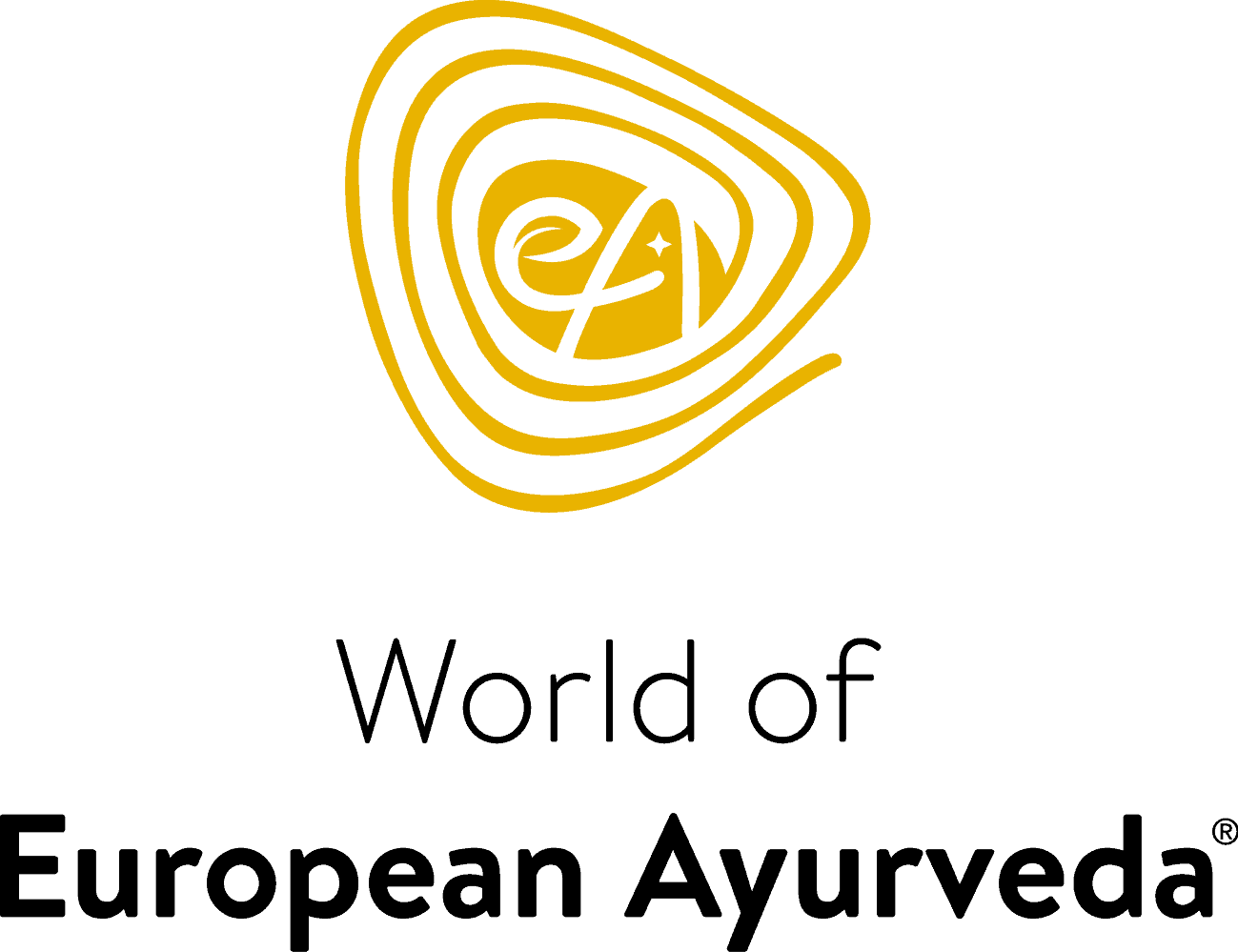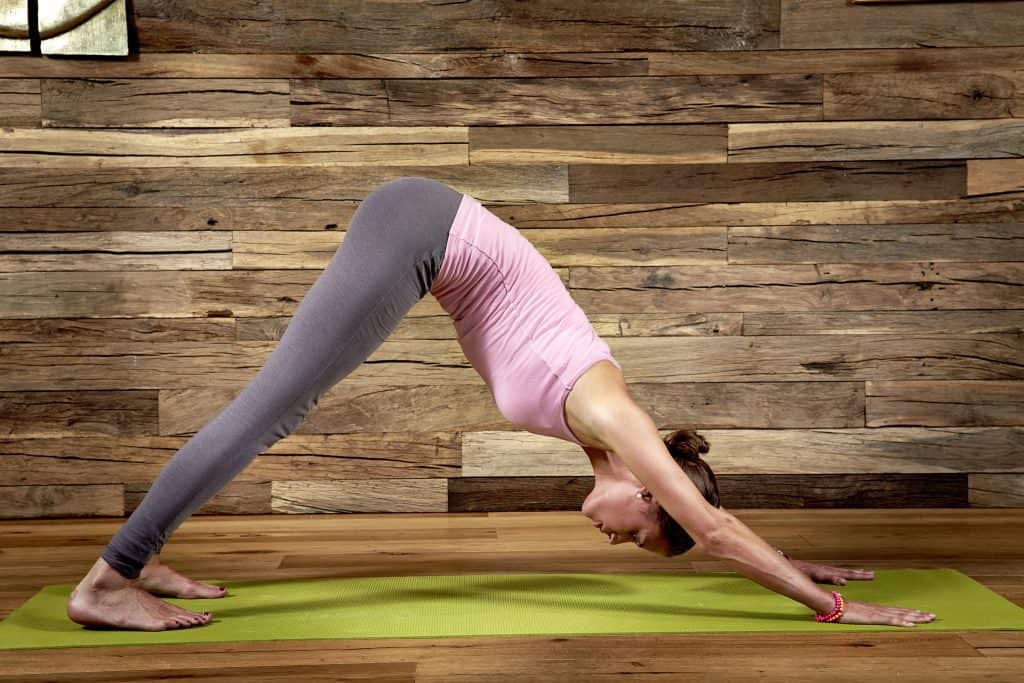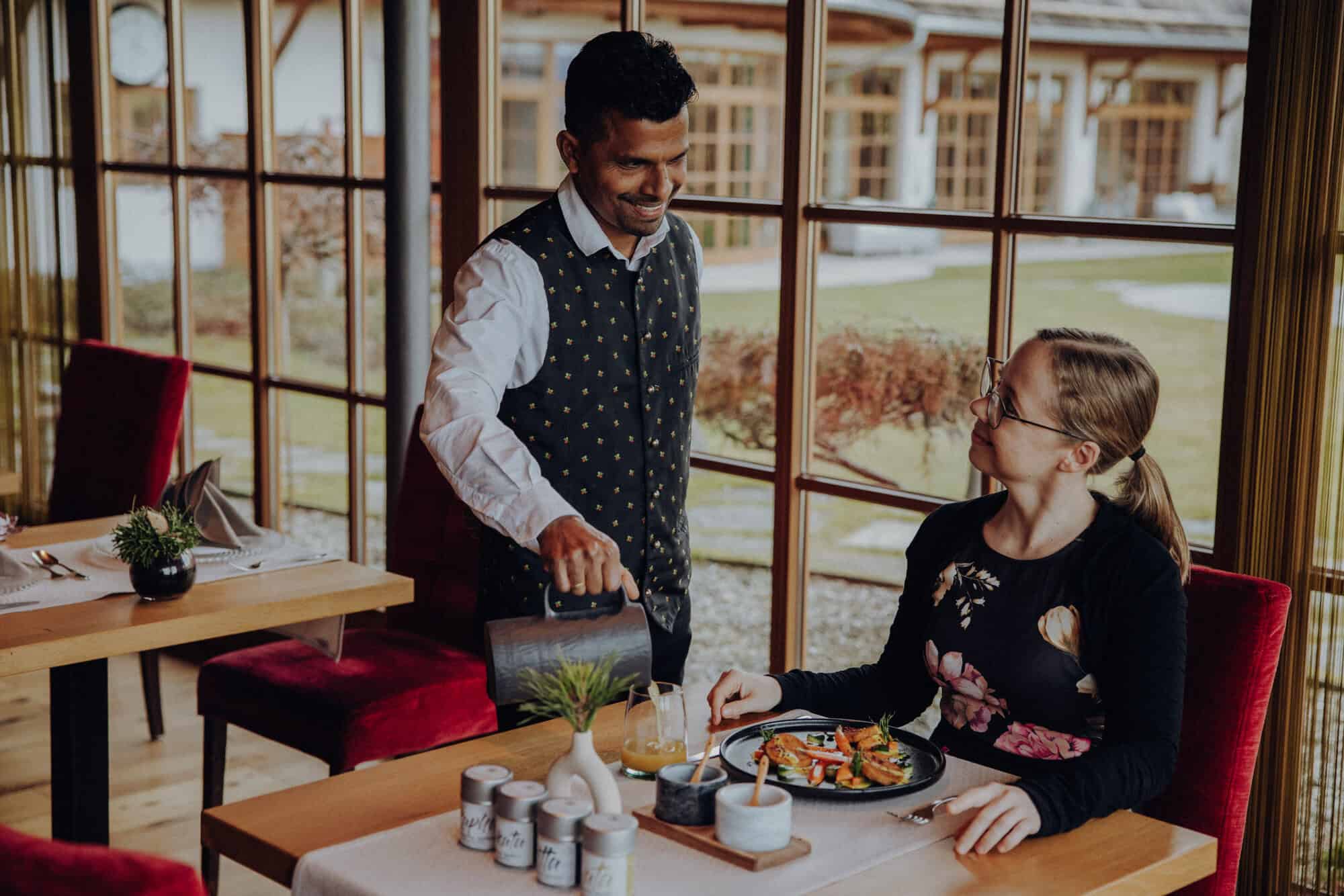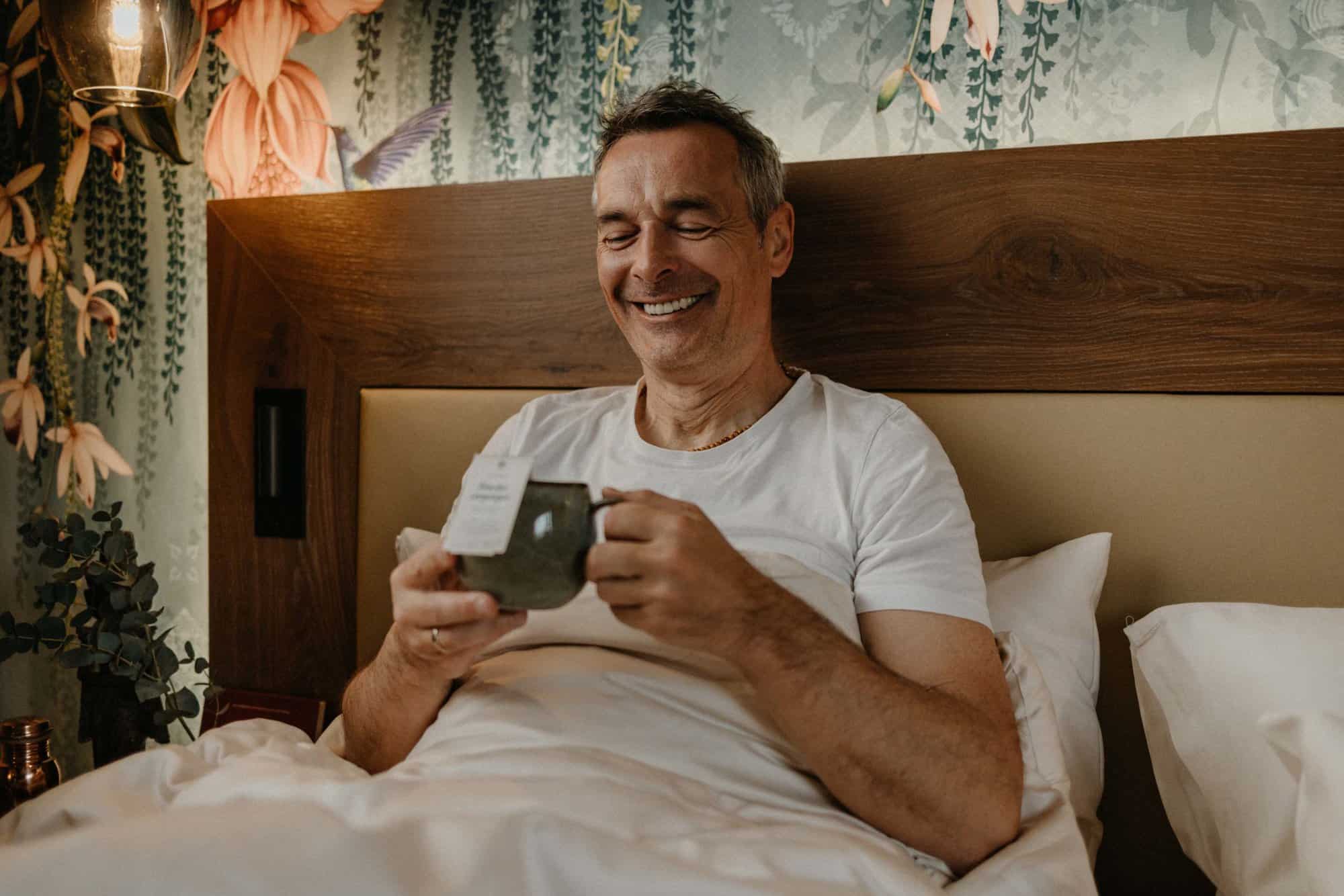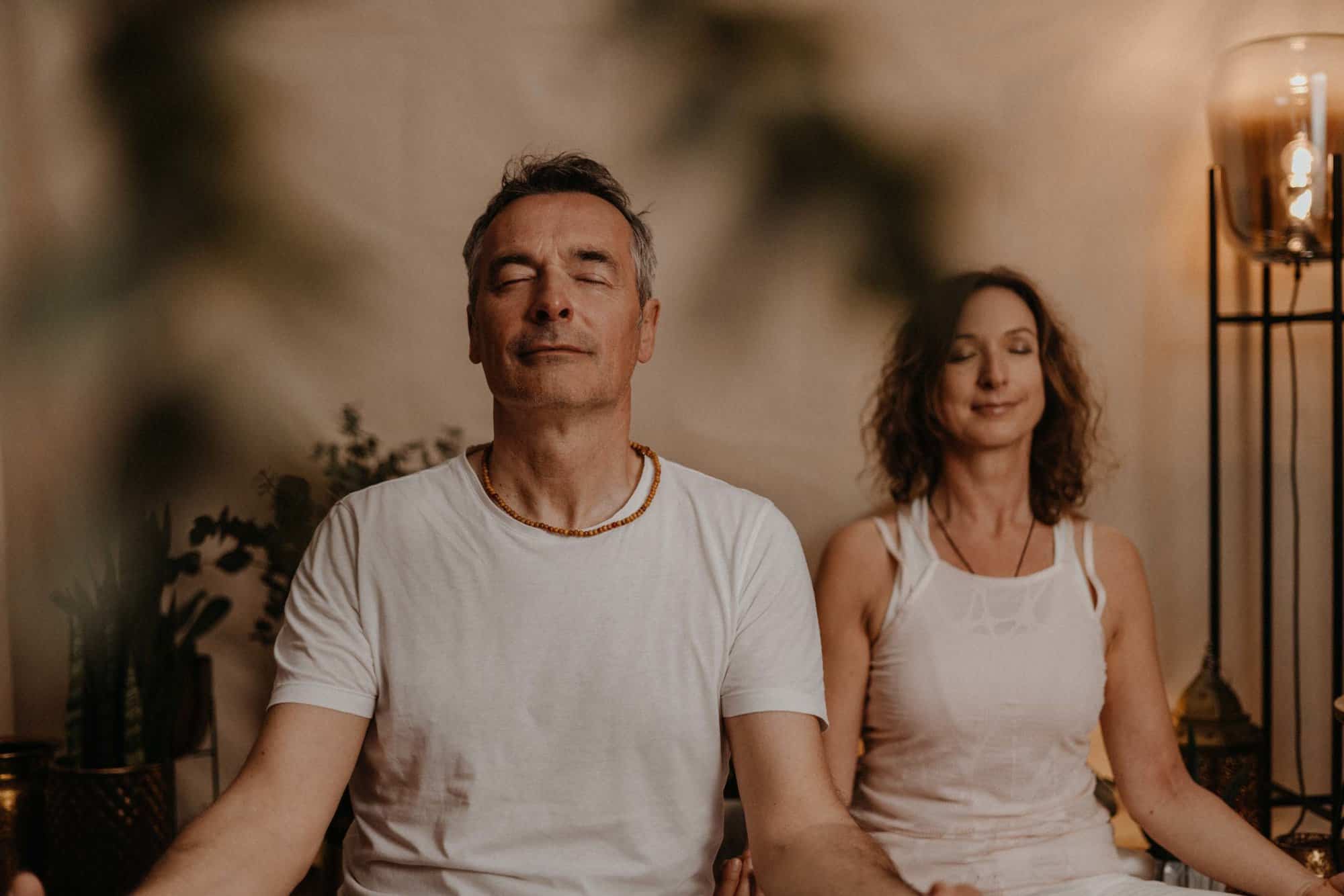Hatha Yoga is the best-known style of yoga and was probably initiated in the 6th and 7th centuries by the Indian scholar and fisherman Matsyenra and his disciple Goraksha. In the 14th century, the Hathapradipika was written by Swatmarama. Here he described Hatha Yoga, all the asanas and effects and all its techniques.
The word Hatha has several meanings. One is "Ha", which means sun, and "tha" means moon. Put together, "Hatha" can be translated as "powerful" or "conscious". The exercises themselves are as contradictory as the name. Hatha yoga is about balancing opposites .
It focuses mainly on the physical body with various asanas and on breathing exercises(pranayama). A Hatha Yoga class is characterised by slow and relaxed exercises - so perfect for a yoga beginner. This is as much about strengthening the sense of balance as it is about strengthening flexibility and muscles. Hatha yoga can make you more balanced and strengthen you at the same time.
Advantages and focus of Hatha Yoga
Just a few hours of yoga are enough to feel a difference. You will notice that yoga works not only on the physical but also on the mental level. The scientific proof is provided by the studies of Harvard University or the University of Illinois.
Hatha yoga is not only the best type for you as a yoga beginner, but also has some great benefits in itself:
- It helps reduce stress and strengthen the body, muscles, mind and spirit.
- Helps relieve back and neck pain
- Helps with depression, sleep disorders and high blood pressure
- The exercises are balanced between movement and exertion as well as rest and relaxation
- The asanas harmonise with breathing exercises and meditation
"A disturbed breath leads to a disturbed consciousness, a regular breath leads to a calm consciousness. The two go hand in hand. That is why the yogi attaches importance to a regular and calm breath - in this way he masters his consciousness and thus prolongs his life." - Hatha Yoga Pradipika
The most important Hatha Yoga exercises
There are also different asanas in the H that can be divided into groups. There are sitting exercises such as the lotus seat (Padmasana), stretching exercises such as the fish (Matsyasana) or the bow (Dhanurasana) and demanding exercises such as the headstand (Sirshasana) or the crane (Bakasana). Although it always looks so easy, a yoga class can demand quite a bit of strength and concentration from you. It is important that you never give up, but keep practising (preferably daily) on yourself and your asanas.
As a beginner, however, it is important that you slowly get your body used to the new exercises.
Muktasana - Upright Seat
Muktasana is, as the German name suggests, one of many sitting postures in yoga. Here it is important to ensure that the head, neck and spine form a line and that you sit comfortably.
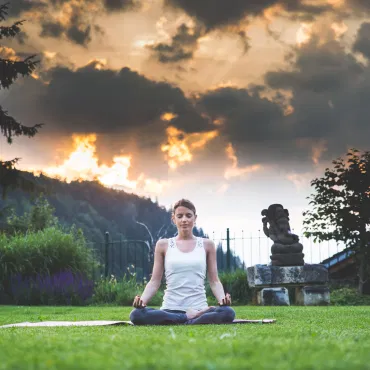
Here's how it works:
- Sit with your legs crossed on the yoga mat or a seat cushion so that your pelvis is upright and your knees can sink as far as possible to the floor. The knees should be lower than the pelvis.
- Place your hands on your knees. The palms can point upwards or downwards.
- Relax and linger for a few minutes.
Dhanurasana - Bow
This asana eliminates hesitation and doubt and provides orientation and security. It also strengthens the entire back, improves posture and breathing power and thus helps to promote the ability to make decisions.
Here's how it works:
- Lie on the bow and rest the forehead on the floor. Then bend the knees and clasp the ankles with the hands.
- Inhaling lift the head and pull the legs up with the arms. At the same time lift the knees off the floor and keep the groin on the support.
- Hold this position for a few breaths and then slowly lower the legs and head.
Nakrasana - Crocodile
The exercise, also known as crocodile, relieves the lower back and frees it. The body is rotated in such a way that the vertebrae and intervertebral discs detach from each other, allowing life energy to flow.
Here's how it works:
- First assume the supine position and spread your arms out at shoulder height.
- Then bend the right leg and place it to the left. The shoulders and upper body remain on the floor, the lower hip does not rotate either.
- Then turn the head to the right.
- Remain in this position for 5 - 10 breaths and then switch sides.
Adho Mukha Svanasana - Dog Looking Down
The dog looking down is one of the most well-known asanas. This exercise helps with headaches and stimulates the nervous system in the body.
Here's how it works:
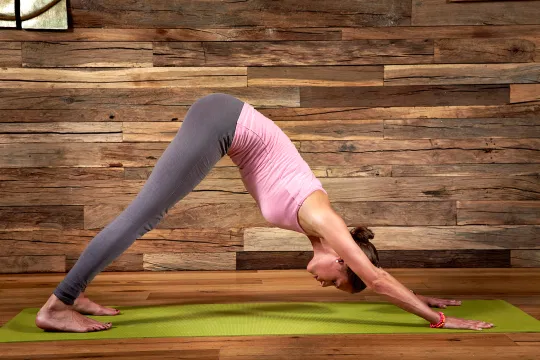
- It is best to start in quadrupedal position. Hands should be shoulder width apart and knees hip width apart.
- Exhaling release the knees from the mat and tuck.
- For proper body tension, you should push away slightly with your hands so that your heels sink into the mat.
- You should hold this position for 1 - 3 minutes and then return to the quadruped or child position.
Balasana - Position of the Child
Child's pose is a very calming and relaxing exercise. It relieves the eyes, nerves, brain, breath and mind as well as the back and shoulders. This asana is a great follow-up exercise for the downward looking dog.
Here's how it works:
- Kneel on the centre of your yoga mat and sit on your heels. The big toes touch and the knees are hip-width apart.
- Now lie forward with a forward bend until the forehead touches the floor.
- Now you can either place your hands, palms down, to the left and right of your head or place your arms, palms up, next to your torso.
- Concentrate here on calm, even breathing and stay in this position for at least 30 seconds, but no more than a few minutes.
Bhujangasana - The Cobra
Cobra pose imitates the erect posture of a snake. Here the legs and hips rest on the floor while the upper body is erect.
Here's how it works:
- Lie flat on your stomach so that the spine does not bend. The tops of the feet also rest flat on the floor and the heels should rest hip-width apart.
- Now bring the elbows back so that you can place the hands flat close to the body at chest level. At the same time release your head from the mat and straighten up.
- Now, vertebra by vertebra, tuck your upper body up until your arms are stretched.
- The gaze should be forward or slightly upward and in line with their spine.
- For an even more intense stretch, you can also look upwards.
- Now breathe in and out slowly a few times and enjoy this posture and stretching of the body.
- When it is a good time for you, you can change from the cobra back to the lying position.
We wish you lots of fun with your first Hatha Yoga exercises. And always remember: "Yoga is not about touching your toes. It is about what you learn on the way down."Jigar Gor. Namasté!
